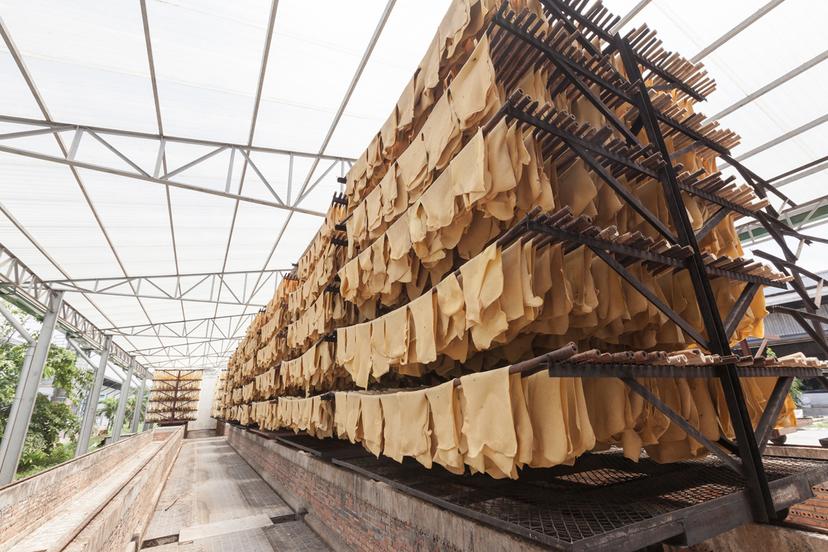Rubber

Overview
Rubber is an essential raw material, whether natural or synthetic. More than half of all the rubber produced is used for tires and tubes for automobiles, trucks, and other vehicles; it is also used in making rain wear, shoes, rubber gloves, medical syringes, large storage containers, floor coverings, balls for sports, insulating materials, and many other products.
The rubber industry offers careers as varied as the products it produces. Rubber cutters and rubber-mill operators work hands on to produce rubber while sales and marketing professionals sell products to the public. Chemists and engineers devise new ways of processing rubber while industrial designers create new products. All of them and others are part of an industry that produces nearly 14 million metric tons of rubber each year.
Manufacturing and sales of vehicle tires accounts for more than half of the rubber industry's business, making it sensitive to ups and downs in the automobile market. When fewer cars are being manufactured and sold, there is less need for workers who make tires. The remainder of rubber manufacturing and sales is for rubber components supplied to the aerospace, appliance, medical, transportation, construction, electrical and electronic industries as well as general products such as industrial products, chemicals, consumer products, flooring, and metal products.
A segment of the rubber industry that has undergone dramatic growth in recent years is rubber footwear. According to a Statista.com report, in 2018, the U.S. exported nearly $125 million worth of rubber and plastic footwear to countries around the world. This was more than double the total value ($58.7 million) of rubber and plastic footwear that the U.S. exported just five years prior. More specifically, the rubber boots market has been growing steadily in recent years, and considerable growth is expected through 2026, according to a MarketWatch report. The top companies in the rubber boots market ...
